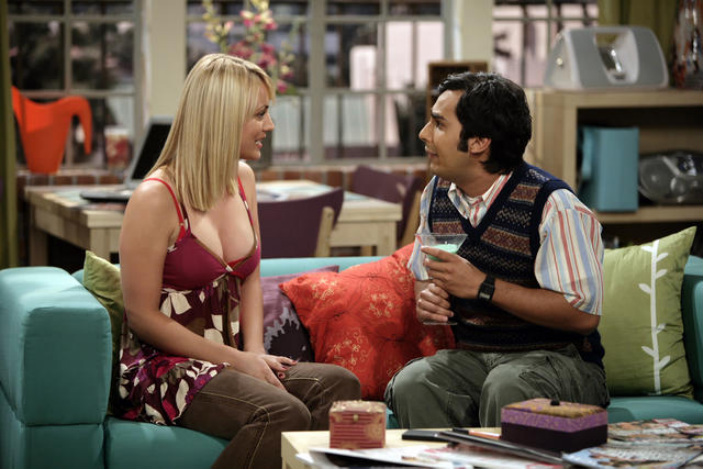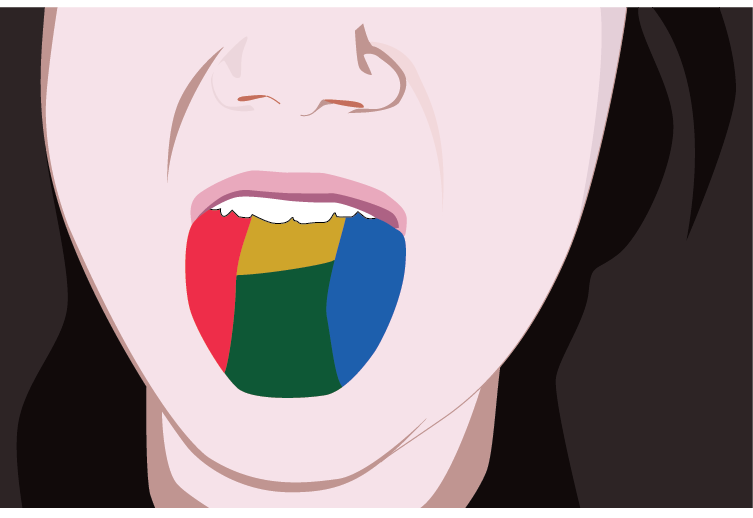How to find creative solutions to new problems? New research suggests that we actually do this better when we focus less. Taking a broader approach to problem solving can help with combining novel ideas that have a huge impact.
The grasshopper experiment
In a classic episode of “The Big Bang Theory,” Raj Koothrappali realizes he can only talk to girls if he drinks. He consumes round after round of grasshopper cocktails and becomes more talkative after each one. Though not immediately obvious, the reason why cocktails helped Raj actually offers insight into finding creative solutions to new problems.
Researchers at the University of Illinois Chicago recently conducted a study in which participants watched a short movie and then afterward were given a creative word association task. Half just watched the film, and the other half watched the film while drinking an alcoholic cocktail. While both groups performed about equally well before the film, afterward the group that was given the cocktail performed significantly better on the creative task—they not only completed the problem more quickly, but were also more accurate.
“Tricking” your brain
Psychology has taught us that our brains are complicated pattern recognizers. In fact, this is how we learn language at a very young age (8 months!). By recognizing the relative probabilities of hearing one kind of speech sound paired with the next, we keep a record of these patterns and develop an intuitive sense for where words end and begin. New York Times bestselling author Ray Kurzweil agrees, and explains in his book, How to Create a Mind, that the brain uses a pattern of “search parameters” to keep an inventory of ideas and the relationships between them.
Usually, the brain searches out local networks—these are ideas that are already connected in a familiar way. This is the default process, and how our brains operate when we apply focus. This means that we actually have a natural bias against innovation. In order to overcome this, we need to trick the brain into applying a broader approach that allows for creating new connections and combining novel ideas: in other words, searching in more far-flung regions of the brain.
Cocktails help with creativity because alcohol broadens the focus of attention just enough for us to connect more distantly related ideas. The same lowered inhibition that helped Raj talk to girls also helps with connecting distant ideas to come up with novel combinations.
Don’t run to the bar just yet
There’s another effect at work here too. The low levels of alcohol consumed by the participants also helped to relax their mood. Researchers Mark Beeman and Karuna Subramaniam of Northwestern University found that participants who watched a short comedy routine were able to solve word puzzles requiring creativity with much more intuitive insight.
Beeman explains, “What we think is happening is that the humor, this positive mood, is lowering the brain’s threshold for detecting weaker or more remote connections.” These weaker and more remote connections are what unlock the brain’s creative ability to solve puzzles with novel solutions and apply new innovations to previously unthought-of areas.
Put on a smile
There are insights from neuroscience to back this up too. When we’re more stressed, this activates a flight-or-fight response within the brain. Formally called the Reticular Activating System, this shifts control of the brain to from the cerebral cortex to the limbic system. The limbic system is great for survival—it helps us make instinctive decisions under pressure. At the same time, however, it deprioritizes the need for creativity and stays away from novelty.
When we relax, the Reticular Activating System toggles control back to the cerebral cortex. Here, the brain is free to engage in creative and nuanced thinking, the kind that results from more symbolic thinking. Some research has suggested that many forms of “writer’s block” are actually a result of these “limbic takeovers” in the brain.
Practice makes perfect
Creativity doesn’t happen by accident—it’s a skill we can hone and develop through training our brains to think a certain way. In a business setting, for example, discussing potential product innovations with your team, how can you get your team to "focus less" to be "more creative"?
Start with these three ideas to get in the habit of thinking creatively:
Inject humor: Depending on your own comedic abilities, opening with a joke can be dangerous. But let someone else do the heavy lifting for you: play a quick YouTube clip or share a funny blog post to lighten the mood before you get started.
Practice connecting distant ideas: Bestselling author Steven Kotler suggests reading two articles at random from your favorite newspaper or online news source. Then, do an exercise writing a few sentences about how the articles could possibly relate to one another. This trains the brain to broaden the “search parameters” it has in its repertoire.
Have a happy hour: Sometimes the Raj route is best. Institute a Friday evening happy hour after work, and facilitate interactions with your team. By combining casual drinks with positive mood (who isn’t in a good mood by the end of the workday Friday?), you’re at the intersection where great innovative ideas are born.
Photo* - Big Bang Theory Wiki
At Vimodi, we are developing technology that helps users have a more engaging, responsive and effective visual discussions and dialogues. Vimodi enables visual mobile discussions for better engagement, motivation, and creativity in meetings and daily communication. Try Vimodi App.
The grasshopper experiment
In a classic episode of “The Big Bang Theory,” Raj Koothrappali realizes he can only talk to girls if he drinks. He consumes round after round of grasshopper cocktails and becomes more talkative after each one. Though not immediately obvious, the reason why cocktails helped Raj actually offers insight into finding creative solutions to new problems.
Researchers at the University of Illinois Chicago recently conducted a study in which participants watched a short movie and then afterward were given a creative word association task. Half just watched the film, and the other half watched the film while drinking an alcoholic cocktail. While both groups performed about equally well before the film, afterward the group that was given the cocktail performed significantly better on the creative task—they not only completed the problem more quickly, but were also more accurate.
“Tricking” your brain
Psychology has taught us that our brains are complicated pattern recognizers. In fact, this is how we learn language at a very young age (8 months!). By recognizing the relative probabilities of hearing one kind of speech sound paired with the next, we keep a record of these patterns and develop an intuitive sense for where words end and begin. New York Times bestselling author Ray Kurzweil agrees, and explains in his book, How to Create a Mind, that the brain uses a pattern of “search parameters” to keep an inventory of ideas and the relationships between them.
Usually, the brain searches out local networks—these are ideas that are already connected in a familiar way. This is the default process, and how our brains operate when we apply focus. This means that we actually have a natural bias against innovation. In order to overcome this, we need to trick the brain into applying a broader approach that allows for creating new connections and combining novel ideas: in other words, searching in more far-flung regions of the brain.
Cocktails help with creativity because alcohol broadens the focus of attention just enough for us to connect more distantly related ideas. The same lowered inhibition that helped Raj talk to girls also helps with connecting distant ideas to come up with novel combinations.
Don’t run to the bar just yet
There’s another effect at work here too. The low levels of alcohol consumed by the participants also helped to relax their mood. Researchers Mark Beeman and Karuna Subramaniam of Northwestern University found that participants who watched a short comedy routine were able to solve word puzzles requiring creativity with much more intuitive insight.
Beeman explains, “What we think is happening is that the humor, this positive mood, is lowering the brain’s threshold for detecting weaker or more remote connections.” These weaker and more remote connections are what unlock the brain’s creative ability to solve puzzles with novel solutions and apply new innovations to previously unthought-of areas.
Put on a smile
There are insights from neuroscience to back this up too. When we’re more stressed, this activates a flight-or-fight response within the brain. Formally called the Reticular Activating System, this shifts control of the brain to from the cerebral cortex to the limbic system. The limbic system is great for survival—it helps us make instinctive decisions under pressure. At the same time, however, it deprioritizes the need for creativity and stays away from novelty.
When we relax, the Reticular Activating System toggles control back to the cerebral cortex. Here, the brain is free to engage in creative and nuanced thinking, the kind that results from more symbolic thinking. Some research has suggested that many forms of “writer’s block” are actually a result of these “limbic takeovers” in the brain.
Practice makes perfect
Creativity doesn’t happen by accident—it’s a skill we can hone and develop through training our brains to think a certain way. In a business setting, for example, discussing potential product innovations with your team, how can you get your team to "focus less" to be "more creative"?
Start with these three ideas to get in the habit of thinking creatively:
Inject humor: Depending on your own comedic abilities, opening with a joke can be dangerous. But let someone else do the heavy lifting for you: play a quick YouTube clip or share a funny blog post to lighten the mood before you get started.
Practice connecting distant ideas: Bestselling author Steven Kotler suggests reading two articles at random from your favorite newspaper or online news source. Then, do an exercise writing a few sentences about how the articles could possibly relate to one another. This trains the brain to broaden the “search parameters” it has in its repertoire.
Have a happy hour: Sometimes the Raj route is best. Institute a Friday evening happy hour after work, and facilitate interactions with your team. By combining casual drinks with positive mood (who isn’t in a good mood by the end of the workday Friday?), you’re at the intersection where great innovative ideas are born.
Photo* - Big Bang Theory Wiki
At Vimodi, we are developing technology that helps users have a more engaging, responsive and effective visual discussions and dialogues. Vimodi enables visual mobile discussions for better engagement, motivation, and creativity in meetings and daily communication. Try Vimodi App.



